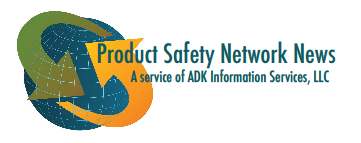Statement of Acting Chairman Ann Marie Buerkle on Fiscal Year 2019 Operating Plan
October 10, 2018, cpsc.gov
Acting Chair Buerkle opened up the hearing on the Fiscal Year 2019 Operating plan stating that “we have just welcomed our fifth Commissioner. A new group of Commissioners, but one with the same mission of keeping consumers safe from unreasonable risks of injury or death. I reject any hint or suggestion that safety is in jeopardy because there is a new majority. We are still the Consumer Product Safety Commission. We still have the same responsibilities to carry out, the same laws and regulations to enforce. As with any change in any administration, it is reasonable to expect that there will be different ideas, approaches, and policies. How we accomplish things may change, but the goal of safety remains the same.”
Statement of Commissioner Elliot F. Kaye on the Passage of the Fiscal Year 2019 Operating Plan
October 16, 2018, cpsc.gov
Commissioner Kaye explains his rationale for not supporting the Fiscal Year 2019 Operating Plan in its final form, “because it fell short in a few key areas. As I considered the draft Operating Plan, I tried to work within the framework as presented to the Commission and offered amendments” with specific goals.
Statement of Commissioner Peter A. Feldman on Fiscal Year 2019 Operating Plan
October 10, 2018, cpsc.gov
A statement from newly-appointed Commissioner Feldman, filling the 5th Commissioner position, begins with this comment: “Today is my third day on the job, and we have wasted no time getting down to business. I am pleased to be voting today on an Operating Plan that sets out clear priorities for the agency, among other things, to focus resources on the highest-priority consumer product safety risks, and to emphasize collaboration, education, and outreach by engaging all stakeholders. I am impressed with the work staff has done in putting together this document, and also with how my colleagues have worked together to reach bipartisan consensus reflecting the priorities of all five Commissioners.”
CPSC Agency Annual Report, Fiscal Year 2018
November 8, 2018, cpsc.gov
The purpose of the U.S. Consumer Product Safety Commission’s Fiscal Year (FY) 2018 Agency Financial Report (AFR) is to assist Congress, the President, and the American people in assessing the agency’s stewardship of the resources it is provided. This annual report is required by legislation and complies with the requirements of the Office of Management and Budget (OMB).
Manufacturers, Retailers, and CPSC Reporting Penalties
December 13, 2018, The National Law Review (Schiff-Hardin)
On October 5, 2018, the U.S. Consumer Product Safety Commission (CPSC) announced that it had negotiated a $3.85 million civil penalty with Costco Wholesale Corporation over an alleged failure to report product hazards involving an electronic trash can, which CPSC alleged violated the Consumer Product Safety Act. Then, on November 26, the other shoe dropped. The actual manufacturer of the trash can, EKO Development Ltd., along with a U.S. affiliate, EKO USA, LLC, agreed to pay a penalty of … $1 million – almost four times less. At times, a retailer can feel “caught in the middle” in this situation, as the manufacturer is the expert on the product and the retailer believes that the manufacturer should be taking ownership of the situation and filing any required CPSC reports.
New York sues Target and Walmart for selling toy jewelry kits high in lead
December 13, 2018, ABC News
New York State is suing the Target Corporation, Walmart Inc., and importer LaRose Industries, for allegedly selling a toy jewelry kit containing lead levels up to 10 times higher than the federal limit, state Attorney General Barbara D. Underwood’s office announced on Thursday. In statements both Walmart and Target said that they removed the items from shelves as soon as they learned of the allegations.
Holiday nightmare: How to avoid deadly Christmas tree fires
December 7, 2018, WRTA Radio
Christmas trees can be deadly. That’s the urgent advisory from consumer safety experts who warn that it only takes a small ignition source to set a festive home ablaze. A tree without enough water is essentially flammable kindling, fueling what can become a devastating catastrophe. Several people die from tree fires each year, according to newly-released data from the Consumer Product Safety Commission, which looked at rates between 2013 and 2015.
Toy slime warning after nearly HALF of products tested positive for toxic chemicals
December 13, 2018, The Mirror
Almost half of children’s toy slimes failed EU safety tests for the presence of a potentially harmful chemical. Which? Magazine tested 13 products from a range of high street and online retailers and found five failed the EU safety standard limit for boron in toys, while another product classified as a putty also failed. Boron is found in borax, a common ingredient in slime that helps to create its stickiness. The EU safety limit is 300mg/kg for slime and 1200mg/kg for putty.
Hidden Dangers in Dust
December 11, 2018, hon.ch
An antibacterial called triclosan is common in dust and could result in dust-dwelling bacteria becoming antibiotic-resistant, researchers report. “There is this conventional wisdom that says everything that’s in dust is dead, but that’s not actually the case. There are things living in there,” said study leader Erica Hartmann, an assistant professor of environmental engineering at Northwestern University in Chicago.
Study finds toxic substances in all 12 carpets tested
December 13, 2018, clickondetroit (NBC 4)
A new study revealed carpets can be dangerous due to toxic substances. The study found 44 toxic substances in all 12 of the carpets tested. Carpet is the most common flooring sold in the United States. It holds a 60 percent share of the U.S. flooring market with 11 billion square feet sold per year. A new report from the Ecology Center reveals 12 different carpets were tested from the nation’s six largest manufacturers and all 12 tested positive for toxic substances.


